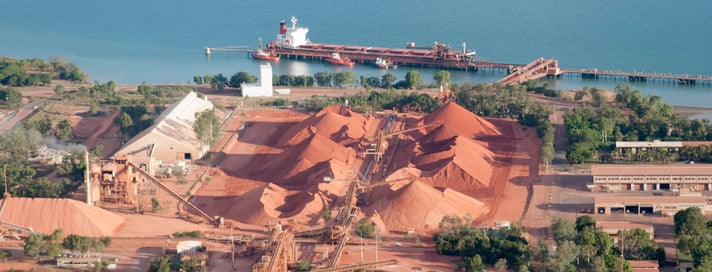
Alumina is the common name for the chemical compound aluminum oxide (Al2O3). Naturally occurring Al2O3 is called corundum, and it is the foundational component of both rubies and sapphires (color variations arise from the impurities that are found in the crystals). Alumina for industrial use is refined from bauxite ore, which is a mixture of the hydrated aluminum oxide minerals; gibbsite, diaspore, and boehmite along with other compounds such as silicon dioxide, iron oxides, and titanium oxide. Bauxite is often mined from topsoil in tropical and sub-tropical regions. The Bauxite is then treated using the Bayer Process, which separates the bauxite into red mud and Al2O3 using a combination of heat/pressure and sodium hydroxide. Aluminum hydroxide, in the form of fine-grained crystals, is added to facilitate precipitation of aluminum hydroxide crystals. The hydroxide mixture is then heated to drive off the water, producing several grades of alumina; calcined alumina, smelter grade alumina and activated alumina.

The purified aluminum oxide has many uses, with perhaps the best-known being the end-use in foundries which turn it into aluminum metal, which in–turn is used in a variety of applications. The powdered alumina is also used in several industries, including as fillers in plastic, an abrasive in grinding applications, ceramics, and even to produce reflective effects in metallic paints for automobiles! One of the largest industrial applications for Al2O3 is as a catalyst in refineries, to convert hydrogen sulfide waste gases into elemental sulfur.
As a reference material producer, LGC understands how critical quality-checks are within each stage of the production process. Screening is needed from the raw bauxite coming out of the ground, to the red mud by-products, as well as purity screening of the refined alumina. Once the alumina is turned into solid aluminum metal and Al alloys (to be discussed in a future blog), even more checkpoints are added to the process. LGC Industrial currently provides numerous 17034 aluminum metal standards typically used with either spark OES or XRF, and we will soon be releasing our own line of powdered bauxite and alumina standards.
View our range of aluminum alloy and other metal reference materials by downloading our catalog.
Ready to order? Request a quote:



